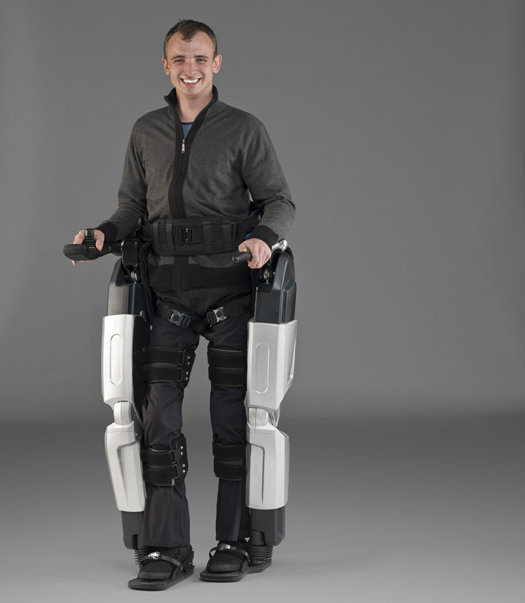Tired of rolling around on a wheelchair? Get up and walk. No, really. It’s a choice the mobility-challenged could have soon enough when the Robotic Exoskeleton (REX), a battery-powered pair of robot limbs, becomes commercially available.
Devised by a New Zealand duo, both of whose mothers are confined to wheelchairs, the lower-body exoskeleton straps around the waist and legs with a platform for your feet, essentially giving the wearer a new set of legs. The machine does all the work involved with moving, which the user manages through an integrated joystick and control pad on the accompanying armrests.
REX allows for a variety of actions, including standing, sitting down, walking, moving sideways, turning around and using the stairs (they need to have treads at least 12.1 inches and risers with a maximum 7 inches of length, though). It requires a solid, stable surface to move properly, but can go so far as to walk on ramps and slopes (maximum of 7.1 degree angles). Because it allows both standing and sitting motions, the wearer can transfer directly from a wheelchair to REX and back.
An onboard rechargeable battery supplies the needed juice for the robot legs to operate. Each battery can only work for two hours of operation on a full charge, but can be quickly swapped for a fresh backup during extended use.
Over seven years of development has gone towards creating REX, but the results do sound like they speak for themselves. The company is currently concluding all required tests for bringing the machine to market in Europe and Australia, with US FDA submission to follow after that. Price for the walking-enabling exoskeleton is being pegged at around $150,000.
[Rex Bionics via PopSci]

